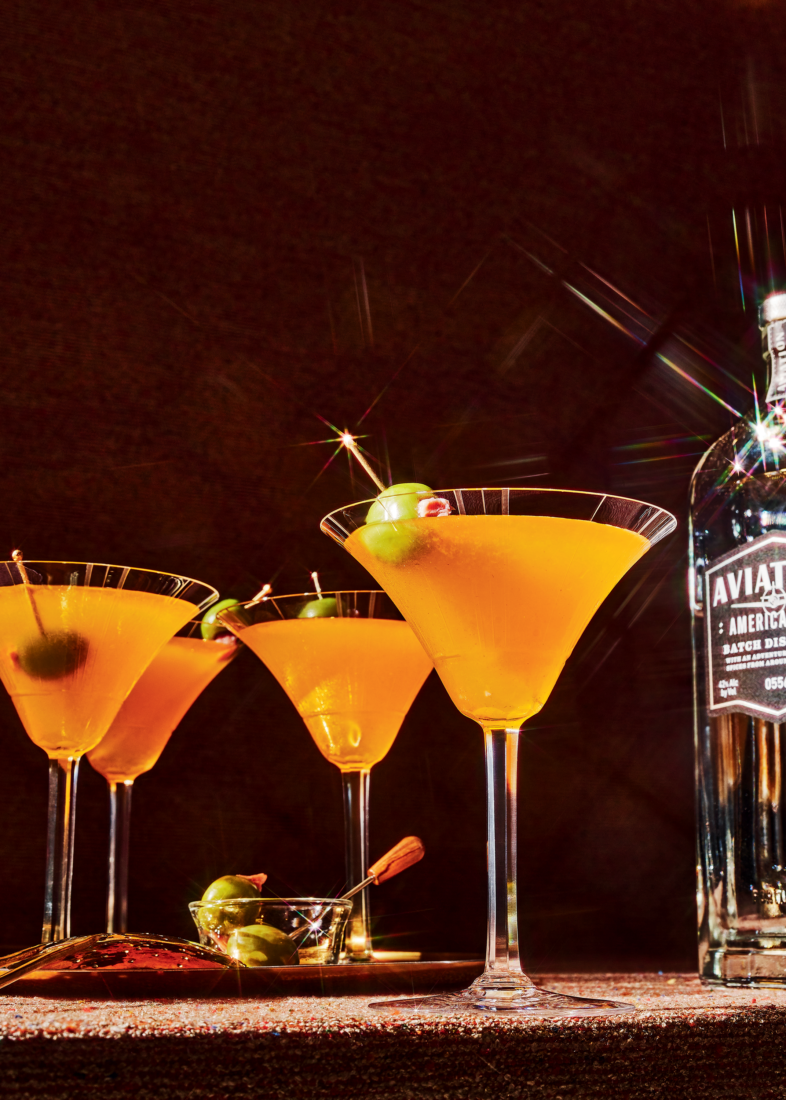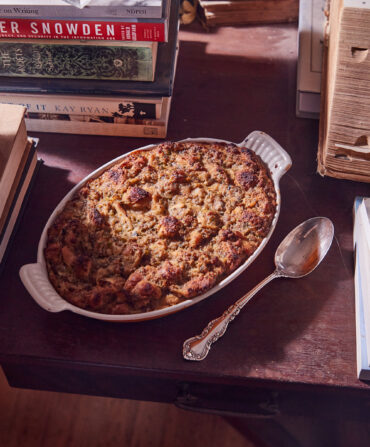Ashleigh Shanti, the chef de cuisine at Benne on Eagle in Asheville, needed to make some room in the restaurant’s walk-in refrigerator. So she handed a quart of potlikker—the liquid left over after her team stewed down collard greens—to bar manager Tye Harrison. “Do something with it,” she requested.
Harrison started playing around that night. He tried it with whiskey, but that did not spark joy. He experimented with a few other variations. Then a customer came in and ordered a martini “porn star”–style—she wanted it “extra, extra, extra dirty,” Harrison recalls, with lots of brine from the olive jar. A light bulb went off. Harrison stepped into the kitchen and told Shanti he needed some smoked turkey neck. Right now. “It was in the middle of service,” she says, “but he had this determination in his eyes.” He got his turkey neck.
The dirty martini has been around since 1901, when a bartender in New York took to making martinis with a muddled olive, then later someone added a splash of brine from the jar. (Strict constructionists will know this version is more closely related to a Gibson, not a martini, but that bait comes attached to a trap that’s best not reached for.) Franklin Delano Roosevelt later popularized the cocktail—the president never met a martini variation he didn’t like.
That night, Harrison substituted Shanti’s potlikker, which he had mixed with honey and hot sauce to mimic the blend the restaurant uses for braising chicken wings, for the standard olive juice. Then came the garnish: an olive stuffed with a bit of the smoked turkey neck purloined from the kitchen. The result was a savory, salty martini. If you’re making it at home, you can use either vodka or gin, Harrison says, but the botanicals in gin dance best with the complex flavors of the spiced-up potlikker (though you’re of course also welcome to use the potlikker from your own greens recipe).

When the newly christened Potlikker Martini appeared on Benne’s menu earlier this year, customers laughed at first. Then they ordered it and stopped laughing—Harrison says that those who like it really like it. “If you’re a martini fan, it’s definitely something you should try,” he says. The lessons here are twofold: Sometimes, the best things come from what some might consider waste. And, no matter how busy you are, if someone approaches you and demands smoked turkey neck, you should probably just give it to him.
This article appears in the August/September 2020 issue of Garden & Gun. Start your subscription here or give a gift subscription here.








